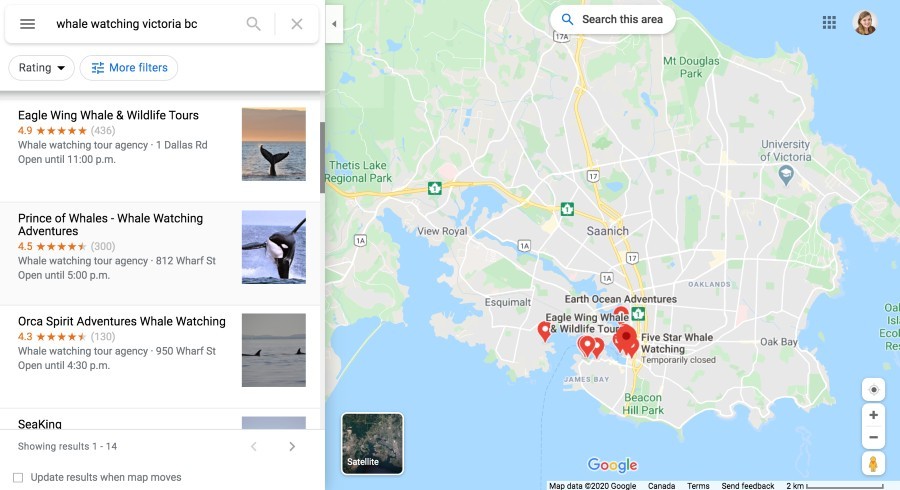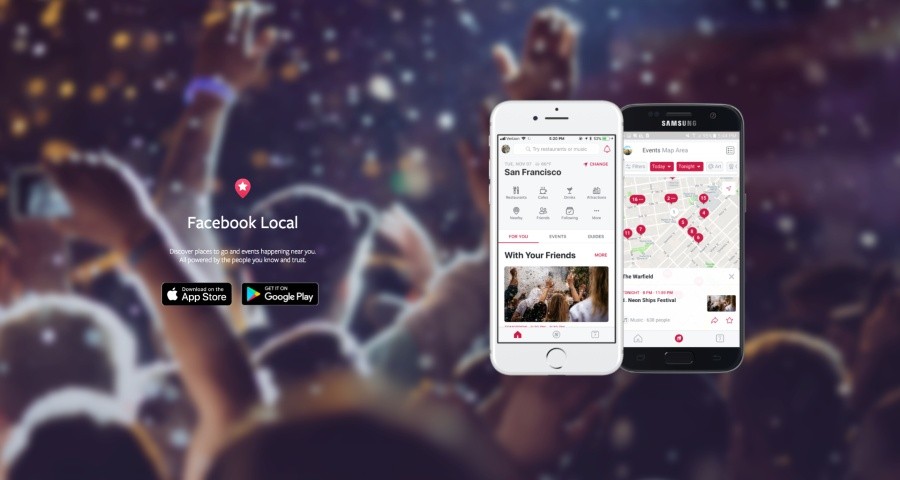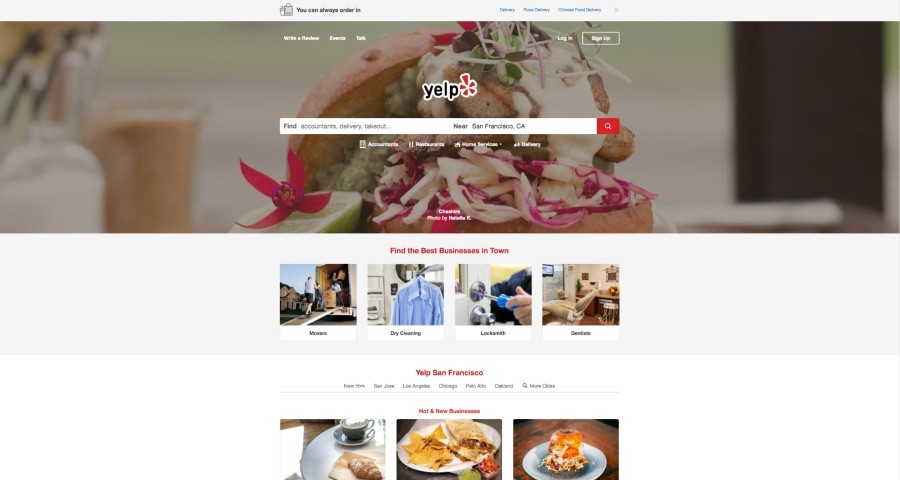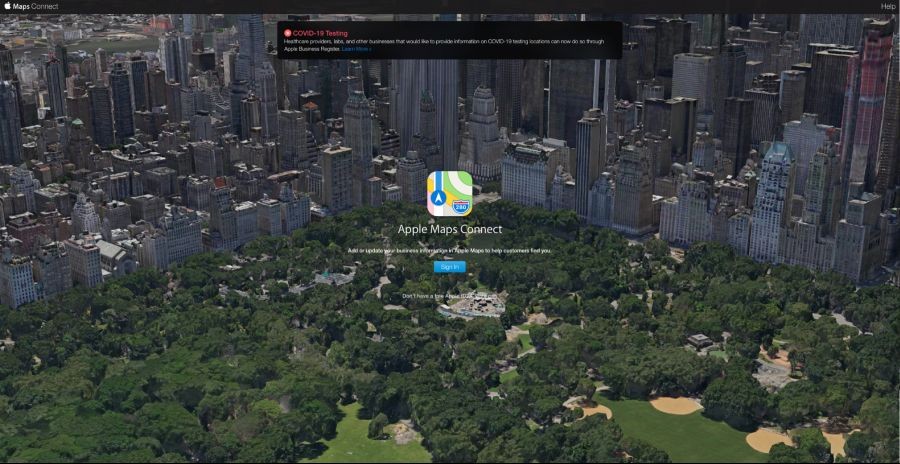Remember when the phone book was the only place you could look for a local business without walking about the neighbourhood? Well now, there are hundreds, perhaps thousands, of business listing sites where people can search for a product or service and instantly find essential information about a relevant business nearby — no more flipping through the Yellow Pages.
And you’ve probably heard time and time again about how you should claim your business listing on these websites. As a small business, it’s one of the best ways to compete for online visibility effectively. It makes sense, doesn’t it? The more places you are, the bigger your reach. But you may be thinking, “I already have a website, social media profiles, and OTA listings. Isn’t that enough?” Not really.
You see, the real benefit of local listings, the bread and butter if you will, is the local SEO clout. Every online business directory allows you to share your Name, Address, and Phone number — otherwise known as NAP data. In our recent post on local SEO keywords, we touched a little on the importance of having consistent citations, but let me say it again louder for everyone in the back to hear!
Your business citations should be 100% accurate
Google takes trust very seriously. By cross-referencing your NAP data across the web, the search engine confirms that you are a legitimate business, giving it the confidence to show you in the local search results. Better put, Google knows that it’s not going to send users to a business that doesn’t exist. And the more correct citations you have, the more you reinforce your existence — helping to earn those higher rankings.
Odds are, your tour or activity business is already on multiple local listing sites, seeing as directories sometimes populate the information themselves, and anyone can contribute to an unclaimed listing. So, there may be many different variations of your business address, and even old phone numbers floating around. Unfortunately, every inconsistency is a strike against you in Google’s eyes.
By claiming and optimizing your local listings, you can secure citation accuracy for improved local SEO. While also ensuring potential guests have the right information, so you don’t lose their business to a wrong number and directions. But there are a few other benefits to making this the forefront of your local marketing strategy, which includes:
- Maintaining your brand reputation: by being in control of the content, from descriptions to photos. Only you and appointed administrators will be able to make changes going forward.
- Driving website traffic: since most online business directories let you share your website URL as well, you can encourage searchers to click-through and learn more, increasing the likelihood of a direct booking.
- Obtaining more backlinks: for another vote of confidence and, subsequently, better overall SEO performance. Online directories are typically high-ranking and trusted sites, so a backlink from them is a link worth getting — so long as it’s a DoFollow link. If not, then see benefit #2 again because it’s still a referral.
- Saving you money: and potentially earning you more revenue because it’s free marketing!
So, what’s stopping you from squaring away your local listings during this downtime? Not going to lie, it can be a lengthy, tedious process of sifting through every site and manually submitting or updating your business information for maximum coverage. But trust me when I say, it’s going to make a HUGE difference in the long run.
That said, you can always pay for a location management service — like Moz Local, which comes with a free online presence check. Otherwise, it’s best to tackle the dominant players first, which is what we’re going to do, starting with the champion of local listings:
Google My Business
The Local Listing Champion

Google My Business (GMB) is one of, if not, the most powerful marketing tool for local businesses, and yet, many tour and activity operators neglect to do anything with it, let alone verify their listing. So, let’s quickly go over why a GMB listing — also known as a Business Profile — is a must-have:
1. Boost your local visibility
With a claimed and optimized GMB listing, you stand a better chance at snagging a spot on the coveted local snack pack in Google Search. You know, that mapped box that displays three businesses related to a local search query, appearing at the top of the first page of results. First seen, first considered.
2. Show up in Google Maps
Whenever someone searches for a nearby business like yours using Google Maps, a red pin will drop on the map, showing them where and how close you are. Meanwhile, your Business Profile will also display in the sidebar, and again, if you have an optimized listing, you can earn a higher ranking over your competitors, making it a whole lot easier to capture the local market.
3. Reduce booking friction
Think of your Business Profile as a bite-sized version of your website. For the most part, your listing can summarize everything a searcher needs to know about your business and offerings, while leading them down the path to booking. By quickly scrolling, they can see photos, reviews, essential details, and visit your website to make a booking!
How to claim your Google My Business Listing
If you haven’t claimed your Google My Business listing yet, you will want to see if one already exists for your business. Just type your brand name into Google Search, and if it pops up on the right in the Knowledge Panel, click claim this business. If it doesn’t, you can create a Business Profile by following these steps.
During the set-up process, you’ll come across a step to select a verification option. Don’t click Verify later! It’s important to get this done as soon as possible so you can get straight to optimizing your listing beyond entering your NAP. That said, it’s relatively easy to verify your business. You can do so by submitting a code from a postcard sent by Google or for select businesses, via phone or email.
Side note: if you have multiple locations, you can still manage them all under a single Google My Business account, and even request bulk verification for 10+ locations.
Once you get the go-ahead, you can access the dashboard and unlock the rest of the GMB features, so that you can make your Business Profile the best it can be, starting with entering your correct NAP data.
Download our free, 52-page Local Marketing Guide and learn how to optimize your Google My Business listing step-by-step, plus other ways to reach a local audience.
2. Facebook Local
Category Winner for Social Media

Your Facebook Business Page isn’t just good for engaging with your followers, promoting your offerings, and making it easy for guests to book using Checkfront’s Facebook booking integration. Because now, Facebook also has an online business directory called Facebook Local that helps users discover what’s happening near them and the best places to go around town.
By browsing the mobile app, they can see upcoming events that their friends and other locals are interested in attending, as well as use the various shortcuts and filters to discover businesses nearby. As long as you have a Facebook Business Page and you’ve entered your basic information, like your NAP, you can show up in the results for relevant queries.
Checkfront tip:
Facebook Local has yet to make a category for Things to do. However, if you want your business to get more attention on the app, you can always create an event as a workaround.
For example, let’s say you offer ghost walking tours around town. Once a week, you can host an event and share it on your Facebook Business Page, rebranding the original tour so that it appeals more to locals. Make it a Saturday night thing, change up the theme and location every time, and choose an event name that will excite and hook your target audience, like Scare Your Socks Off Saturday.
Your event will then show up under Discover Events in Facebook Local, and soon enough, more and more locals will start clicking Interested when they see who else is going. Afterwards, you can ask attendees to support your business by liking your Facebook Page, inviting their friends to do the same, and leaving a Facebook Review.
3. Yelp
Category Winner for Online Reviews

Yelp is a local search service that’s characterized by its online reviews. Although Google My Business is quickly surpassing Yelp as it’s acquiring reviews faster than any other platform, Yelp still has 178 million unique monthly users who trust the directory to find local businesses and what others have to say about them. So, it’s a can’t-miss local listing.
When you claim your business on Yelp, you can pique a user’s interest by uploading quality photos, adding relevant business information and responding directly to reviews. Not only that, but you can also track user views, and customer leads that Yelp generates for your business.
Checkfront tip:
One of the coolest features you can utilize on Yelp for marketing and encouraging customer loyalty is the Check-In Offers. Basically, you can offer rewards — like special promotions and free upgrades — to those who “checkin” to your business on the Yelp mobile app. Which they can then redeem when they physically check-in to enjoy the experience.
The best part? Every check-in broadcasts to their friends who also use Yelp, helping to boost your brand awareness and potentially earn bookings from them as well.
4. TripAdvisor
Category Winner for Travel

I know what you’re probably thinking. What is an online travel agent doing here? Isn’t this list for local directories only? Why are we even talking about travel when we don’t know what it’s going to look like in the near future and how long it will take to bounce back fully?
Hear me out. TripAdvisor is still a top place to list your business. You don’t have to take bookings with a TripAdvisor Experiences account right now, but you can always treat the site strictly as a listing opportunity. In fact, you absolutely should create a listing — if you haven’t done so already — so that people can still find your business there and leave reviews.
Not to mention, TripAdvisor is a high ranking, globally-recognized site. TripAdvisor listings tend to get top positions in the search engine results and capture more clicks because of their well-known brand. So, claiming your TripAdvisor listing can legitimize your business further while giving you that big boost of brand exposure for free.
And while we can’t predict how locals will interact with TripAdvisor at this time, whether they’ll associate it more with travel or will continue using it to look for things to do nearby. It’s one of those things where it’s better to do it just in case, rather than not and miss out.
Checkfront tip:
There’s been speculation about how TripAdvisor’s Popularity Ranking really works — if the algorithm is based solely on the recency, frequency, and quality of reviews. In any case, what matters most is that TripAdvisor is known for its user-generated content. It’s one of the main reasons people use the site when considering which business they can trust for an experience worth booking.
So, regardless of the ranking system, you should still try to encourage your guests to leave a TripAdvisor review and upload photos of their experiences, like you would for Google My Business. Not just to potentially boost your TripAdvisor ranking but, more importantly, to strengthen your brand reputation as well.
5. Apple Maps Connect
Category Winner for Up and Comer

It’s been no secret that Apple Maps isn’t even in the same playing field as Google Maps. But things are starting to change. Apple Maps is looking better than ever! At the beginning of the year, Apple finished rolling out it’s revamped design and functionality in the United States, and Europe will be next in the upcoming months.
Re-built from the ground up, Apple Maps no longer collects data from third parties, but rather from its own devices, so that it can make adjustments faster than before. Plus, the new improvements are snazzy, to say the least, which includes a detailed view of roads, buildings, land, and even indoor complexes.
Considering Apple Maps is the default app on iOS devices (iPhones and iPads), it’s only a matter of time until its massive customer base notices and makes the switch from Google Maps — even if it still has a long way to go. However, you can still add your business to Apple Maps Connect and position yourself for success by establishing a strong presence on the app now.
Checkfront tip:
Apple Maps Connect is still basic in comparison to Google My Business. But that doesn’t mean you should put off claiming your business listing and entering the information that you can, specifically your NAP data. It’s quite easy to complete your listing; there aren’t many steps, other than adding essential details and verifying your business over the phone. Keep in mind; you’ll need an Apple ID to sign-up.
Final thoughts
After you’ve finished with the top local listing sites, don’t forget to tackle all of the other places where you should add or update your business citation. To save you some time, we’ve curated a list of the most popular directories for maximum discoverability.

42 other local listings for your tour business
Download our free Local Marketing Guide and update your NAP in relevant places as you make your way down the list.



